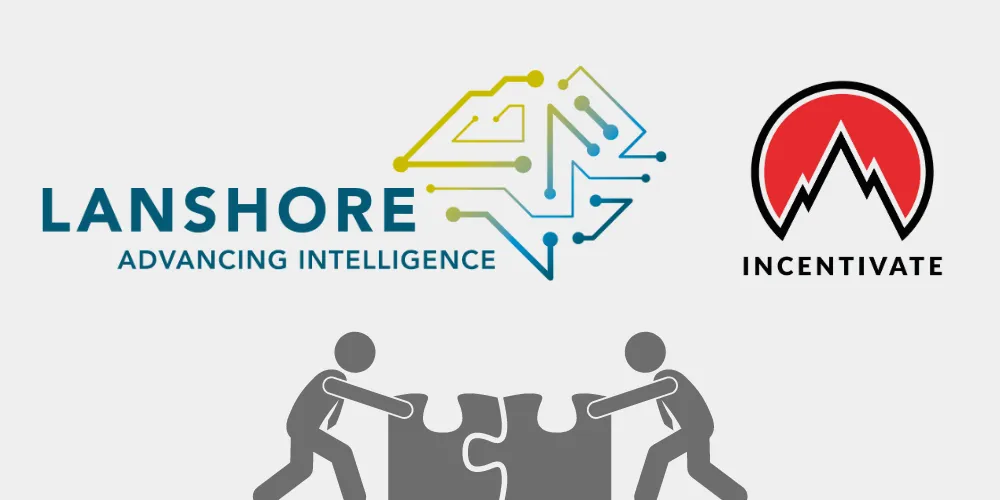
In the blog post, we will explore key governance levers you can use to enhance your program's efficiency and compliance.

Find out the signs that your incentive program has outgrown Excel and learn how transitioning to automated solutions like Incentivate can enhance accuracy, efficiency, and transparency in your sales commission management.

Learn essential sales compensation tips that align with business goals, motivate teams, and drive revenue growth for your organization.

Incentivate is a full-featured no-code sales commission and incentive management solution suite with built-in IC intelligence and business workflow to automate commissions of in-house sales force & other channels. It supports clients of all sizes and industries.

IRDAI's proposed elimination of upfront commissions for life insurance agents seeks to improve industry stability and customer service by evenly distributing commissions over the policy term.
Importance of Sales Force Effectiveness and How to Measure it
- Sujeet Pillai
- Sep 08, 2022
- 4 min read
There's a difference between efficiency and effectiveness. While efficiency measures the rate at which you perform a certain task, effectiveness measures the impact of the tasks performed. Thus, a highly efficient team can still be an ineffective team if the tasks they are performing are of no use. This is why a lot of companies misunderstand what sales force effectiveness really is and how they can improve it. Sales managers measure metrics like quota attainment and win rates for their team but those are not the same as measuring sales force effectiveness.
What is Sales Force Effectiveness?
Sales force effectiveness, in the broadest sense, is the ability of the sales team of an organization to get a "win" at every stage of the customer journey and improve the revenue as well as the bottom line of the organization.
The "win" here can vary from company to company and sales team to sales team. For one company, onboarding a new client can be considered as a "win" while for another, hitting a certain target constitutes the "win". No matter what the measurement criteria are for a company, they all have the same objective: contribute to the success of the business.
Sales force effectiveness in business measures how good your sales team is working to achieve those targets. This measurement is not just limited to teams and is extended towards individual contributors as well since their performance reflects the performance of the entire team. By analysing this, managers are able to optimize their sales efforts while going forward and understand where their team is lacking in terms of contacting leads and closing deals.
Improving sales force effectiveness is a company-wide issue and not just a sales team issue. It requires collaboration between the sales and marketing teams so that they can work together and find out what's working and what's not. Continuously improving the strategies, messages, knowledge, and skills the salespeople are using is the only way to keep getting opportunities. Companies worldwide spend near to $1 trillion annually on their sales team and it is important to get a positive return on that investment.
How to do Sales Force Effectiveness Assessment?
There are a few crucial metrics that help sales managers in measuring the sales force effectiveness in their business.
1. Sales Team Activities
While the sales efforts matter for sure, the velocity of sales is important as well. There first needs to be a benchmark against which you can measure the fluctuations in the sales team activities. This will give you a quantitative and bird's-eye view of the efforts put forth by your sales team.
Keep an eye on the number of calls the team has made, emails sent, meetings booked, notes logged, quotes given, and other metrics to ensure that your sales team is working at the maximum efficiency possible and whether they'll be able to hit the targets.
2. Length of Sales Cycles
How much time a deal spends in the sales pipeline before converting into a successful sale gives great insight into any bottlenecks that might be happening in your sales process. Bottlenecks are unavoidable in a sales funnel but identifying them early on can help in solving those issues quickly.
Monitor the average length of your sales cycle and identify and address issues that are responsible for the delay in getting a successful deal. Coaching the sales team through effective solutions help in improving sales efficiency.
3. Customer Response Time
From the moment a person interacts with your brand, they have the potential to become a potential customer. It is thus important for companies to be responsive and keep those leads engaged while they are still warm. If a customer is interested in a certain product and at the same time a sales rep contacts them to talk about a deal, it has more chances of progressing and becoming successful.
It is essential to analyze the average customer response time for your sales team and how quickly they engage with a potential customer. This is not just limited to the first contact but applies to any proactive follow-up calls or meetings as well.
4. New Customer Acquisition Rates
One of the most essential things to keep a business going is acquiring new customers regularly. Measuring this metric accurately gives an insight into the efforts your sales team are making in finding new customers.
Identifying sales territories for different sales reps beforehand gives an easy way of tracking monthly acquisitions coming from each territory. This sectoral analysis enables sales leaders to identify any gaps in the knowledge or skill sets of sales reps and also shows which areas have higher demands than others.
5. Customer Attrition Rate
Bringing new customers is not the only important thing in business, keeping your existing customers within the community is necessary as well. It is healthy for companies to lose a few customers every now and then but a quick loss in business opportunities can be a dangerous trend.
Keep an eye on customer turnover rates and measure them against the rate of getting new customers and sales growth. Identify when the customer attrition rate has gotten to an alarming rate and what can be done to bring it down.
6. Revenue Growth and Net Profitability
Perhaps the most obvious metric for sales force effectiveness assessment. Monitoring revenue growth provides a significant indication of overall business success. While focusing on the numbers is important, there should be room for some flexibility in changes in customer needs, departmental issues and more.
It is also important to remember that a rise in revenue doesn't necessarily mean that you are profitable as well. Implementing and managing sales strategies can cost a lot of money over time. It is thus important to analyze customer acquisition rates, operating expenses, customer attrition rates, and other expenses adequately.
Importance of Measuring Sales Force Effectiveness in Business
Measuring sales force effectiveness has a number of benefits for an organization. In order to improve on shortcomings or overcome bottlenecks, it is important to identify the issues first. Tracking top metrics helps in that identification.
Sales leaders can assess what practices their sales team are following and how effective they are in achieving the objectives. By following inefficient practices, sellers waste a lot of crucial time in doing things that don't have high return values. With a clear understanding of the sales process, they can ask questions like which processes aren't working, Processes that are more successful than others, how to improve on the existing processes.
Accurate measurement of the performance of a sales team also gives insight into which are the top performers in the team and who are lacking. Sales managers can use this information to analyze which of their sales team members might improve with assistance like just-in-time coaching, training materials, talk tracks, and guidance. These resources will help even the lowest-performing reps to improve on their performance and close more deals.
No matter what the business is, it can be difficult to hit the ground running without continuous innovation. The same goes for the sales strategies. Evaluating sales programs honestly, tracking the progress of different activities, targeting specific areas for improvement, and developing newer sales strategies requires measuring sales force effectiveness regularly.
Measuring sales force effectiveness not only improves the sales team but is beneficial for the marketing department as well. Both the teams work together to find new leads, contacting them and converting them into reliable customers. The marketing team can learn from the insights to understand which areas complete more sales and where there is scope for expanding the territory, finding new customers and generating more revenue.
How to Improve Sales Force Effectiveness?
Here are some tips that sales managers can follow to improve their sales force effectiveness.
1. Increase Collaboration Among Team Members
A sales team consists of members who work together yet individually to achieve a common goal: more and more sales. Every salesperson has an individual target which they achieve by working dedicatedly. However, the success of a sales team depends on these individuals communicating with each other, giving coaching advice, attending meetings, collaborating and helping each other for achieving higher sales numbers.
2. Respect Salespeople Working Methods
Every salesperson can have a different approach to sales and targeting customers. While there are several tips and tricks that have been known to get results, it is important that you let your sales team do things the way they feel comfortable. The focus should be on accomplishing the target and not how to reach there.
3. A Little Help can go a Long Way
Sales is a learning process and there's always room for improvement when it comes to selling products and services to customers. Arming your salespeople with modern productivity tools can significantly improve their chances of finding success and increase the number of closed deals. This tool can be anything from sales software to personalized training programs or webinars.
4. Keep Your Salesforce Updated
There's nothing worse than a poorly planned sales strategy or poorly defined roles for everyone in the sales team, and in the whole organization as well. Your salespeople work tirelessly to meet their quotas and it is only natural that they should be updated about any change in targets, activities, or anything else. Keep an open line of communication with your sales team and keep them in the loop about anything that'll help them with the sales process.
5. Use Incentives for Motivation
Sometimes the sales team can lack the motivation to go out there and complete a sale. This increases as the number of years they've been working increases. Incentives or variable pay is helpful in motivating them to keep selling and hitting their targets. A little bit of monetary temptation can work wonders for salespeople and improve the effectiveness of the overall sales.
How Incentivate Helps in Improving Sales Force Effectiveness
While leading a team of only a few salespeople, a sales manager can keep a close look at how everyone is performing and where they are facing difficulties. In bigger organizations, however, keeping track of what every salesperson is doing personally can be a near-impossible task. Connecting with team members to know what's bothering them is even more difficult.
This is where sales force effectiveness management solutions like Incentivate come to help. With data being the most important pillar on which the measurement is based, Incentivate improves the transparency of the sales force so that their activities are easily visible to the sales manager. Incentivate can easily integrate with ERP, CRM, HRMS and other solutions to gather every iota of data about the sales team and its members.
It captures relevant information and tracks essential KPIs for every role inside the organization. It has a no-code data analytics, management, and reporting platform that anyone can use pretty easy to track business metrics of their employees and drive innovation. Organizations can automate data sourcing, enable schedule-based processing, and perform metric calculations at the click of a button with the help of Incentivate.
Other outstanding features of Incentivate include IC plan modelling where sales managers can simulate new plan changes and compare the output with an existing plan to see which works better. There is integrated Business Intelligence capabilities as well where organizations can create custom reports and visualize data calculations for insightful decision making. They can create a variety of payment curves with the help of the built-in IC intelligence and business workflow feature of Incentivate.
Incentivate's sales force effectiveness management solution is not just available for bigger enterprises, SMEs can leverage its benefits as well. It enables more than 70% reduction in the total cost of ownership and provides a 75% faster change rollout. With 256-bit SSL encryption for data at rest and in transit, you can be sure that your data will be secured as per the international guidelines and requirements.
